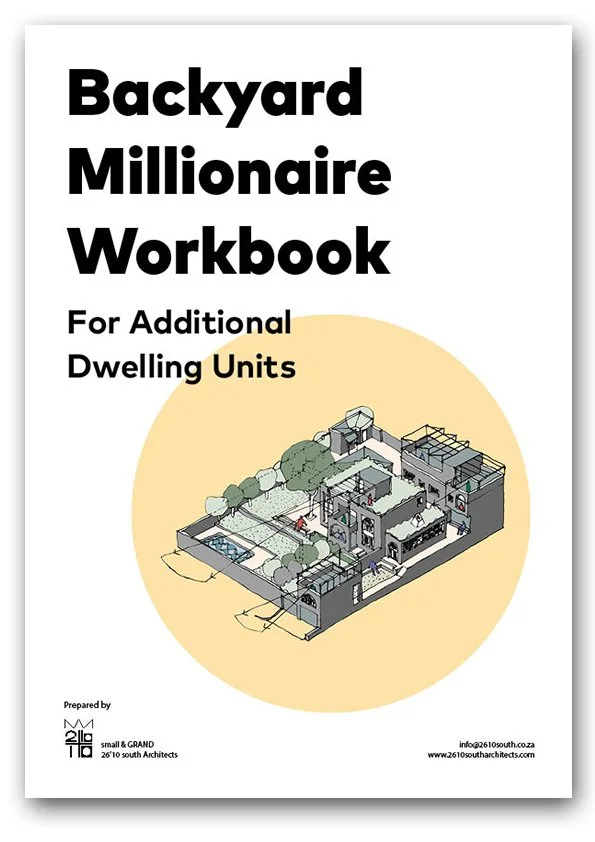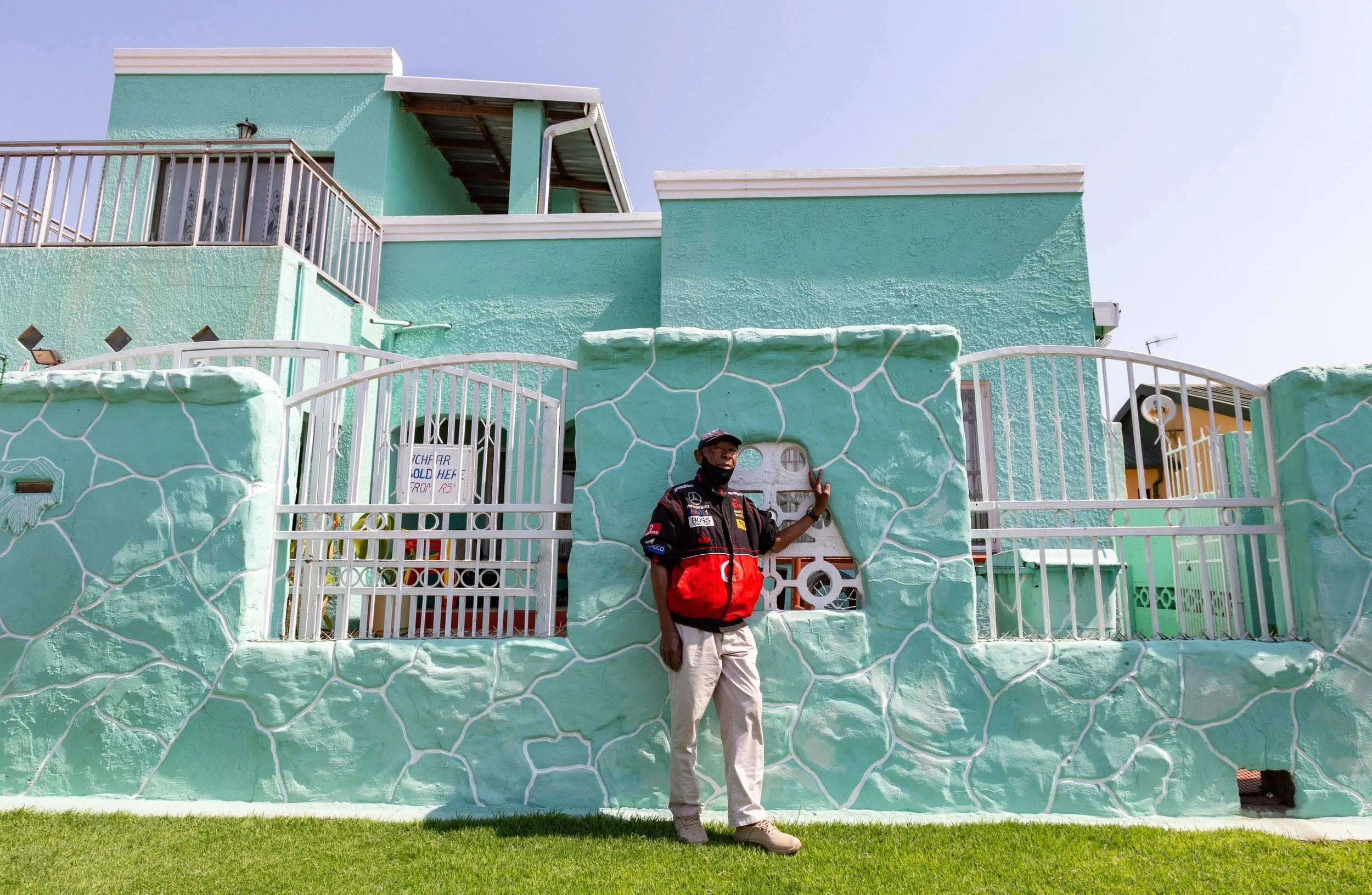Backyard Millionaire Edition Part 1: Additional Dwelling Units
Mindful Design #12
Sketch by Thorsten Deckler
Welcome to the Mindful Design newsletter #12!
Backyard Millionaire Edition Part 1: Additional Dwelling Units.
Those are my wonky feet and toes on a beautiful, tropical beach in rural KwaZulu-Natal. This sketch reminds me of what really motivates me: going to places I love with the people I love, doing what I love - making wonky sketches!
While I am not driven by making money beyond taking care of my family, I am motivated by what it can give me: time. Time to enjoy life, travel, and pursue my passions. To achieve this, I need to be smart with both my time and money.
As someone who has always been interested in property, I’ve discovered that our homes can be powerful tools for building wealth. That's why I created the Backyard Millionaire series. Over the next few months, I will share three key strategies for using your primary residence to build wealth. I am also creating mini-workshops that illuminate the legal and technical aspects of these strategies.
In this edition we look at:
Additional Dwelling Units (ADUs)
If you own a Residential 1 zoned property (commonly a house on a plot of land), you can now build additional dwelling units without having to rezone which is expensive and lengthy. This allows you to set up a manageable rental income stream. If you invest the net income, it can yield a tidy sum over time, helping to secure your retirement, ensure quality education for your kids, or save for that adventure you’ve been dreaming of!
The ADU Trend
Because ADUs offer a flexible model that accommodates different life situations, the trend of building additional or auxiliary dwelling units (as they are known in the USA) has been gaining momentum worldwide. From Los Angeles to Joburg, cities have amended their by-laws to encourage the building of ADUs. Besides the extra income for homeowners, there are many benefits to this trend. ADUs make efficient use of land, provide affordable, well-located housing, promote safety, and support local businesses through increased density.
Besides that, ADU’s have, in many instances, helped turn sprawling suburbs into vibrant and safe neighbourhoods that offer an alternative to the cookie-cutter hellscapes developers are building.
Second dwelling on a property accommodating four generations - sketch: Thorsten Deckler
In South Africa, most municipalities allow Res 1 property owners to build one or more dwellings in addition to an existing house. In the Western Cape, second and third dwellings are allowed, while Johannesburg will allow up to six micro-dwellings plus a shop!
With the increasing cost of living, rapid urbanization, and the huge need for affordable, well-located housing, there is no shortage of tenants.
So, if you think you have a suitable property and the appetite to become a small-scale developer and landlord, you can claim a piece of the action. With the right insight, you can create a product that your tenants will love and that will generate a continuous income that keeps pace with inflation! And best of all, you can watch that money compound month by month.
MINI WORKSHOP
If you are wondering whether this is a suitable strategy for you, I invite you to join my 1-hour mini-workshop. This is a live online presentation during which you will:
Get to Know the Rules
Become aware of the legal parameters that will allow you to legally build multiple ADUs. We will briefly cover the by-laws of various South African municipalities, with a particular focus on Johannesburg’s recently revised Land Use Scheme.
Know Your Options
ADU’s come in many shapes and sizes and knowing what your options are will help you make informed decisions that suit your property, budget, and financial goals.
Tips and Tricks
Most backyard rooms, cottages, or garage-flats range from depressing to outright creepy, compromising the quality of life for both tenants and owners and, consequently, rental income and property values. With these tips, you will know how to create a product that brings in higher rents, increases your property value, and contributes positively to your neighbourhood.
Have a Process
I will cover the six steps that will give you the best result and mitigate your risks.
BONUS: The Backyard Millionaire Workbook for ADUs
After completing the workshop, you will receive a workbook to help you gain an overview of your project, define your goals and brief, work out high-level costs, and how to you minimize your risk.
The workshop will be held live on ZOOM and will be hosted by me. There will be a 30-minute Q&A session at the end.
Cost: R450 per person
Date: Wednesday, 28 August 2024
Time: 6pm-7pm South African Standard Time
You should attend this workshop if:
You own a Residential 1 zoned property (basically, a house, even a semi can work)
You are looking to set up a rental income stream using your residential property.
You would like to accommodate a home office, aging parents, or your rebellious teenager, and still have the option to rent the space out later.
You want to live with others for company and security and generate an income.
You want to start your Airbnb empire.
Papa J in front of his house - image: Heather Mason
The House of the DIY Artist, Soweto
Papa J has secured his retirement by building rental rooms and a small bakery onto his house. A retired car parts salesman, Papa J’s real superpower is DIY artistry. On a tour of his property, I was blown away by his artwork, the furniture, kitchen cupboards, and tiling all made with his own hands. “I like different, I am an artist.” Even Papa J’s post-box is an artwork!
Sketch of Papa J's House, showing the original house in yellow and extensions in blue - image: Thorsten Deckler
Papa J’s post box - image: Thorsten Deckler
With 90% of South Africans not having sufficient savings for retirement, Papa J’s story shows how planning, sweat equity, and creativity can be used to buck this trend.
A live-work village in the suburbs - sketch: Thorsten Deckler
From House to Village
This drawing demonstrates the maximum potential of a property in one of Joburg’s older suburbs. We were amazed by how many different units we could legally fit onto the site without compromising the quality of life of both owners and tenants. With a combination of short and long-term rentals, this property could generate between R25k – R75k gross a month! In addition, the units were designed to be flexible, meaning some of them could be used as studio space saving about R40k a month in office rent.
The Next-door Millionaire
Reading "The Millionaire Next Door" was an eye-opener! The book not only dispels some of the most harmful myths and stereotypes about what it means to be wealthy but also proves that you are more likely to find a millionaire among the inconspicuous, frugal, 2nd-hand car-driving neighbours living in ordinary suburbs! The authors, Thomas J. Stanley and William D. Danko, have conducted extensive research to identify what distinguishes millionaires from the general population in America. One of the traits identified is Long-Term Thinking, which focuses on building wealth over time rather than seeking immediate gratification.
This trait ties in beautifully with the idea of the Backyard Millionaire.
Find out more about developing ADU’s by attending the Mini Workshop!
Please share this newsletter and look out for part 2 of the Backyard Millionaire in which we will cover subdivision.
Love,
Thorsten
Thorsten lives and works in Johannesburg, South Africa. He has 20+ years of experience as an architect and urban designer and has a particular passion for how cities can work better for people. He is a popular speaker and has run many workshops on this topic both locally and abroad.








